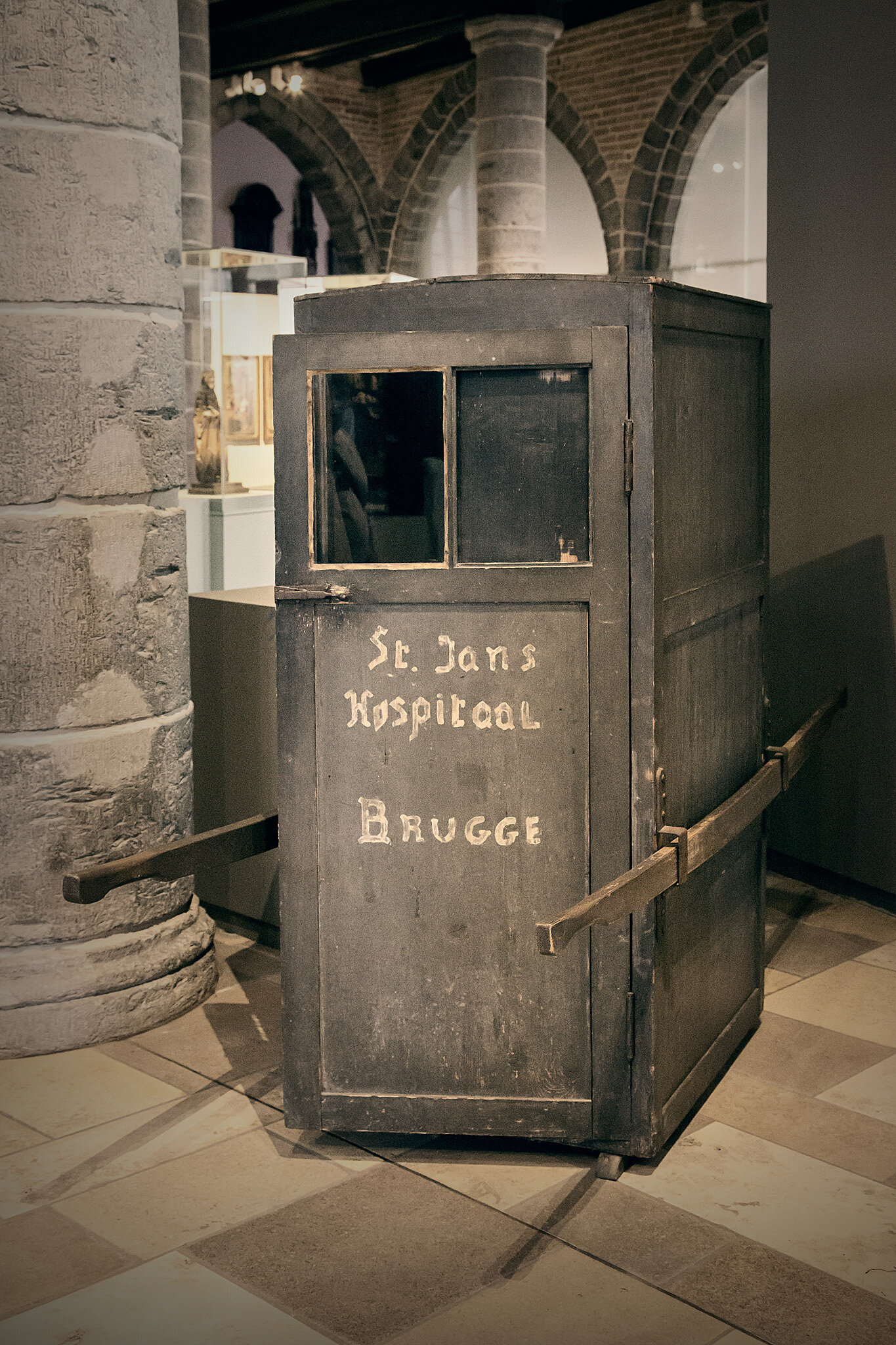St. John’s Hospital/Sint-Janshospitaal, Bruges



St. John’s Hospital originally covered three hectares within the city of Bruges. This full fledged medieval hospital, consisted of wards, a church with bell tower and cemetery, the monastery, the convent and a courtyard with stables, sheds, brewery, bakery and priest’s accommodation. There was also a kitchen garden, orchard hop field and meadows.
The earliest architectural parts of St. John’s Hospital, date from the mid-12th Century. Although run as a religious establishment, it was not a monastic community, however its staff did live in relative poverty. This was the case until the 15th Century, when it did become an Augustian community.
The central of the three wards was built in the early 13th Century, when work also began on the Romanesque tower. The community at St. Johns sought autonomy and recognition as a parish in its own right, so that it would be entitled to its own priest.
The hospital was run by lay brothers and sisters, who’s main concern was to care for the sick and ensure their patients spiritual salvation- the objective was not to cure the patient but to make them comfortable.
The pharmacy was set up in the brother’s former quarters in 1643, and drew visitors looking for medicinal cures. It remained in use until 1971, when the pharmacy became part of the museum.
Located on the river Reie, the water itself was vital to the functions of the hospital. The river carried away not only waste (and the smells caused by waste), but was also used in the kitchens, brewery and laundry.
In addition to what was located on the site of the hospital, St. John’s also owned houses, estates, hospital mills, a brickworks, woodlands, and fields inside and outside of Bruges. This brought in vital income to keep the hospital running.
Inside the spacious wards of the interior, we can still imagine the medieval hospital, although today this also houses the Memling Museum. Much attention is paid to these works of art, many of them are also medieval.
The original St. Ursula shrine dates from around 1400, it was replaced at the end of the 15th Century by a new shrine, painted by Memling. Ursula is shown with her followers sheltering beneath her cloak.



